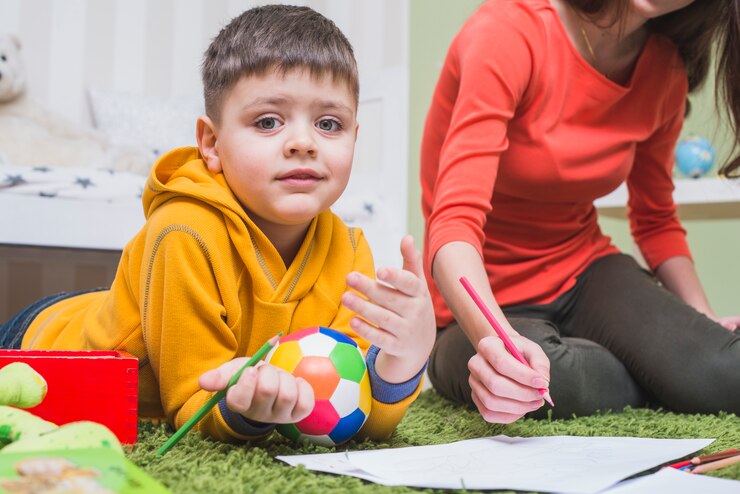
Children on the autism spectrum face unique challenges, especially when it comes to navigating a world often designed for neurotypical individuals. However, it’s crucial to recognize that neurodiversity is not a deficiency at all – in fact, it’s simply a different way of thinking, perceiving, and processing information.
Inclusive education, in this regard, is the legal right as well as the ethical imperative that celebrates this diversity and provides an equitable learning environment for all students, regardless of their neurological differences.
The Importance of Inclusive Education
Inclusive education is a concept that promotes the integration of students with diverse abilities and needs into mainstream classrooms. It recognizes that every child has unique strengths, challenges, and learning styles and that a one-size-fits-all approach to education is neither effective nor equitable. According to a 2022 research, approaches to alter and tailor the mainstream educational environment for students with autism are insufficiently studied.
Consequently, efforts are underway to research strategies that foster inclusive education for autistic students within schools and classrooms. This encourages a sense of belonging, acceptance, and understanding, allowing students to thrive in an environment that values their differences.
At Early Autism Services (EAS), we understand that no two children with autism are alike, which is why we offer a range of tailored services to support each child based on their specific needs. Whether it’s providing a play-based learning environment at our center with peers and a behavior technician or delivering therapy services directly to your home to minimize disruptions to your child’s routine, we strive to accommodate the unique requirements of every family.
Inclusive Education: Benefits for All Students
Inclusive education benefits not only differently-abled students or kids with neurodivergent conditions but also their neurotypical peers. Here’s how –
- It encourages empathy, understanding, and respect for diversity from an early age. Neurotypical students also learn to appreciate and celebrate the unique perspectives and talents of their neurodivergent classmates, thus facilitating a more inclusive and accepting society.
- Moreover, inclusive classrooms provide opportunities for peer-to-peer learning, where students can learn from each other’s strengths and support one another’s weaknesses. This collaborative approach enhances the educational experience, promoting social and emotional growth alongside academic achievement.
Embracing Neurodiversity: Why Inclusive Education Matters
While the concept of inclusive education has gained traction globally, developing nations, including India, still have a long way to go in terms of fully embracing neurodiversity in schools. Many children with autism and other neurological differences continue to face barriers to accessing quality education and receiving the support they need to thrive.
Reports indicate that schools in India are aiming to embrace neurodiversity, especially in metropolitan cities. However, in contrast, non-governmental organizations (NGOs) specifically catering to the special needs of children highlight challenges in admission policies and a lack of awareness regarding specific support requirements among academic institutions.
They also note instances where schools prefer children with special needs to attend separate facilities despite the potential for success in mainstream settings. Findings also highlight the lack of trained teachers, inadequate infrastructure, and societal stigma as major challenges hampering the progress of inclusive education in the country.
At Early Autism Services (EAS), we believe in proactive, personalized autism therapy programs that empower families to collaborate closely with licensed professionals in an inclusive environment. Our team comprises hundreds of experienced behavior therapists, ABA therapists, board-certified behavior analysts, and occupational therapists, all committed to supporting children with autism and their families on their journey toward growth and development.
The Growing Need for Awareness and Acceptance
By embracing neurodiversity, we not only empower individuals with autism and other neurological differences but also enrich our communities with diverse perspectives and abilities. It is time to challenge the stereotypes and misconceptions surrounding ASD and celebrate the strengths and gifts they bring.
Check out our latest article on dispelling misconceptions about autism here.
As a society, we must recognize the importance of neurodiversity and the invaluable contributions that children, as well as young adults on the autism spectrum, can make when provided with the right support and opportunities. Promoting awareness and acceptance is crucial in creating an inclusive educational environment that nurtures the unique talents and potential of every child.
Encouraging Inclusivity: Helpful Tips for Parents
As parents, we play a crucial role in advocating for inclusive education and ensuring that our children receive the support they need to thrive. Here are some helpful tips –
- Educate yourself: Learn about your child’s rights, the principles of inclusive education, and the available resources and support services in your area. For example, government institutions like the National Commission for Protection of Child Rights (NCPCR) are aiming to increase access to inclusive education, specifically for children with special needs.
- Communicate openly: Maintain open and honest communication with your child’s teachers, school administrators, and support staff. Share your child’s strengths, challenges, and specific needs to ensure that appropriate accommodations and modifications are made.
- Advocate actively: Attend school meetings, join parent-teacher associations, and participate in decision-making processes related to your child’s education. Your voice and involvement can make a significant difference.
- Build a supportive network: Connect with other parents of children with autism or neurodivergent conditions. Share experiences, resources, and strategies for navigating the educational system and advocating for your child’s needs.
- Celebrate your child’s uniqueness: Embrace and nurture your child’s strengths, interests, and talents. Encourage them to embrace their neurodiversity as a gift, not a limitation.
In conclusion, by embracing neurodiversity and fostering an inclusive educational environment, we create a society that celebrates diversity and promotes mutual respect and understanding. However, navigating the complexities of understanding a child’s diagnosis and initiating a therapy program can be overwhelming for parents. At EAS, our team of clinicians is here to guide you through every step of the process!
Whether you have questions about your child’s diagnosis or need assistance in starting a personalized therapy program, we are dedicated to providing you with the support and information you need.
So, get in touch right away and let us help your child reach their full potential. Schedule a FREE consultation now!





























 During cognitive behavioural therapy sessions, your child works hand in hand with trained behaviour analysts, such as those at
During cognitive behavioural therapy sessions, your child works hand in hand with trained behaviour analysts, such as those at









Recent Comments